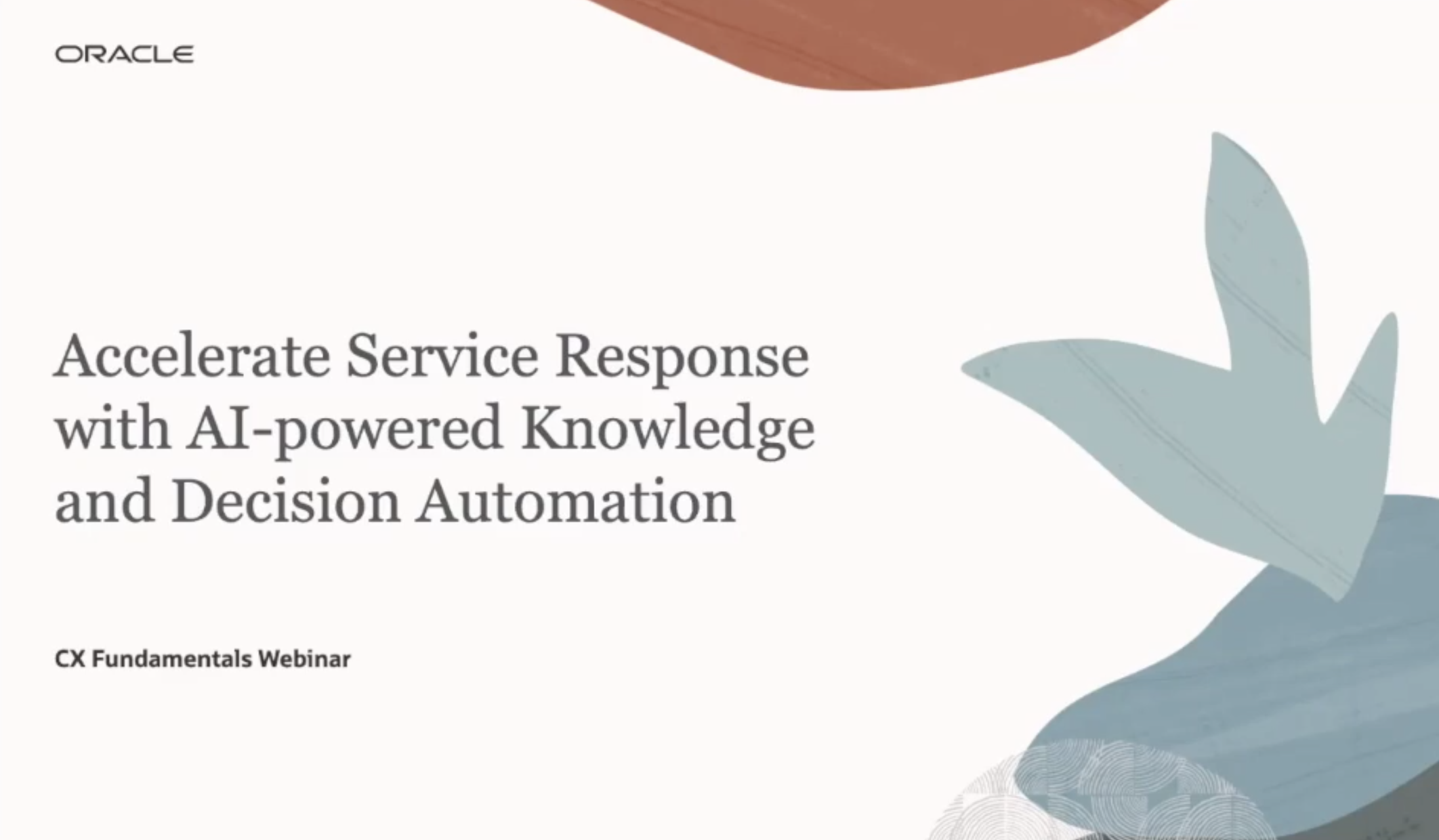Read part 1, part 2, and part 3
So far in this series, I’ve discussed how AI accelerates knowledge creation, improves discovery, and delivers intelligent answers. But what if we could take it a step further? What if we could anticipate the knowledge customers will need before they ask for it?
That’s exactly what we’re doing with Oracle’s embedded AI, and it marks a fundamental shift from reactive to predictive knowledge management.

Register to watch on-demand: Improve service resolution with Knowledge Management and Decision Automation
Beyond Reactive Knowledge Creation
Traditional KCS is inherently reactive—knowledge is created as problems are solved. While this approach ensures content is based on actual customer needs, it also causes a delay between when a problem first arises and when the relevant knowledge is available to fix it. Early customers experience friction while later ones benefit from the accumulated wisdom.
AI lets us flip this script entirely. With Oracle’s AI embedded in Fusion Applications, we can now detect gaps in content, find duplicate or outdated articles, and even predict what knowledge will be needed next.
Semantic Clustering: The Gap Detection Engine
One of the most powerful techniques we’re using is semantic clustering – AI’s ability to group related content and identify gaps in your knowledge landscape. Instead of relying on manual reviews or guesswork, AI can analyze your entire knowledge base and spot patterns that humans might overlook.
For example, if users often search for issues related to “mobile app authentication” but your knowledge base only includes content about “desktop login procedures,” semantic clustering will recognize this as a content gap. The system not only detects the absence but also measures the demand and prioritizes the gap based on search frequency, case volume, and business impact.
Predictive Content Creation
But we can go even further by combining content gap analysis with broader signals from your support ecosystem. By analyzing search logs, support trends, product releases, and social media mentions, AI can predict emerging support needs before they become widespread issues.
Imagine this scenario: your development team releases a new feature, and AI starts detecting subtle increases in related search queries, along with a few early support cases. Before this becomes a trend, the system can alert your knowledge team to create preemptive content, potentially preventing hundreds of future support tickets.
This approach aligns perfectly with the broader “shift left” strategy, where support knowledge moves earlier in the customer journey. Instead of waiting for problems to reach the support queue, AI enables content to be created proactively based on emerging patterns and predictive signals.
The Business Impact
Proactive knowledge isn’t just a technical achievement – it’s a business advantage with measurable impact. When you can anticipate customer needs and deliver answers before questions are even asked, you:
- Reduce case volume by resolving issues before they escalate to support tickets
- Increase customer satisfaction by providing immediate solutions during the research phase
- Build competitive differentiation through superior self-service experiences
- Optimize resource allocation by focusing knowledge creation efforts where they’ll have maximum impact
That kind of foresight transforms your knowledge program from a cost center into a value engine, directly contributing to customer success and operational efficiency.
The Human Element
While AI handles prediction and gap analysis, humans are still vital for content creation and quality assurance. The best approach combines AI’s pattern recognition with human expertise in content strategy, technical accuracy, and customer empathy.
AI might identify that customers need more information about API rate limiting, but human experts determine the best way to explain complex technical concepts, choose appropriate examples, and structure the information for different audiences.
Before we wrap up this series, there’s one more important point to cover: how these AI-powered changes are transforming the day-to-day experience of support teams. In the final blog, I’ll explore what the human-AI partnership actually looks like in practice and how it’s elevating the role of support professionals.
